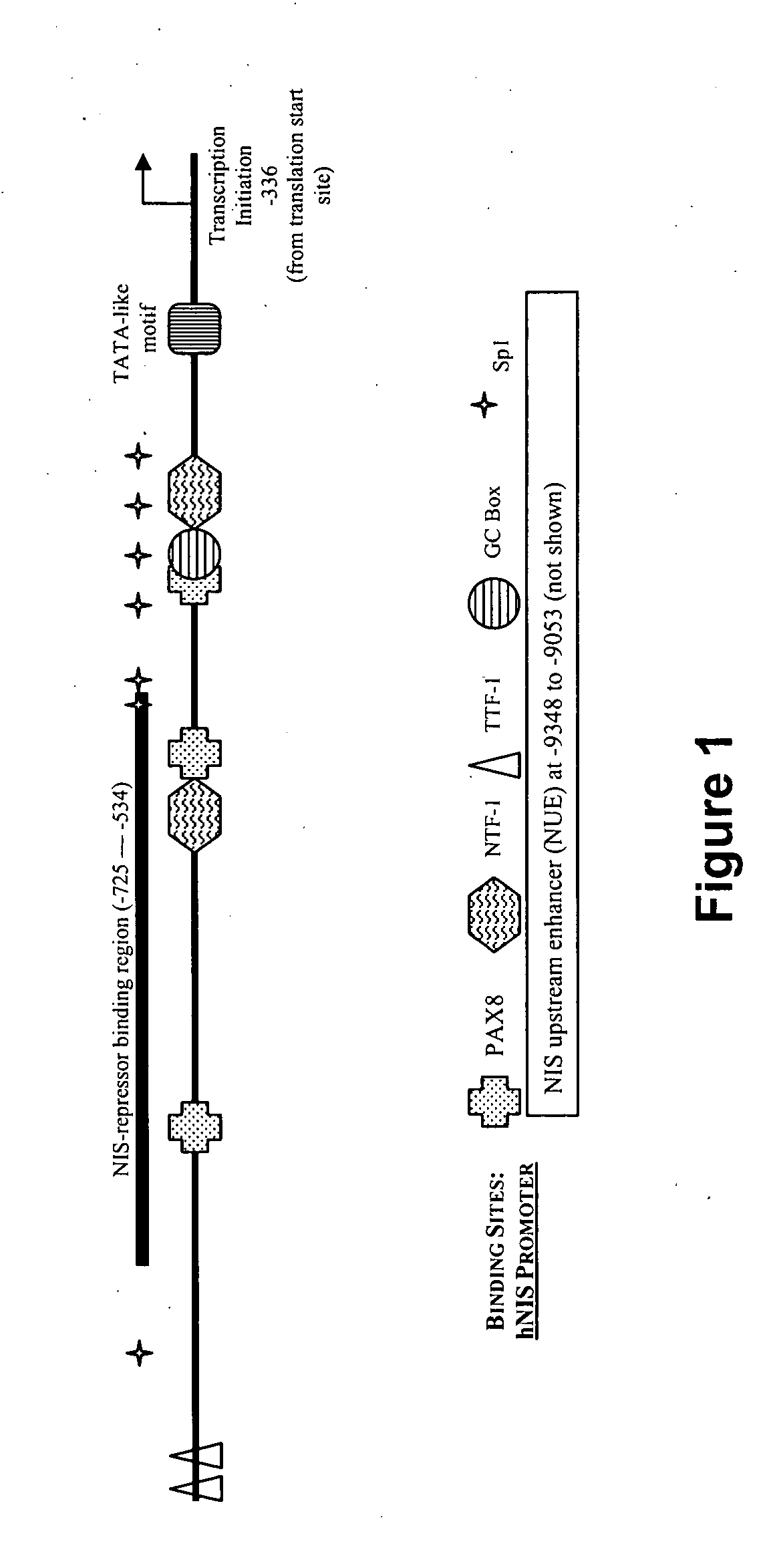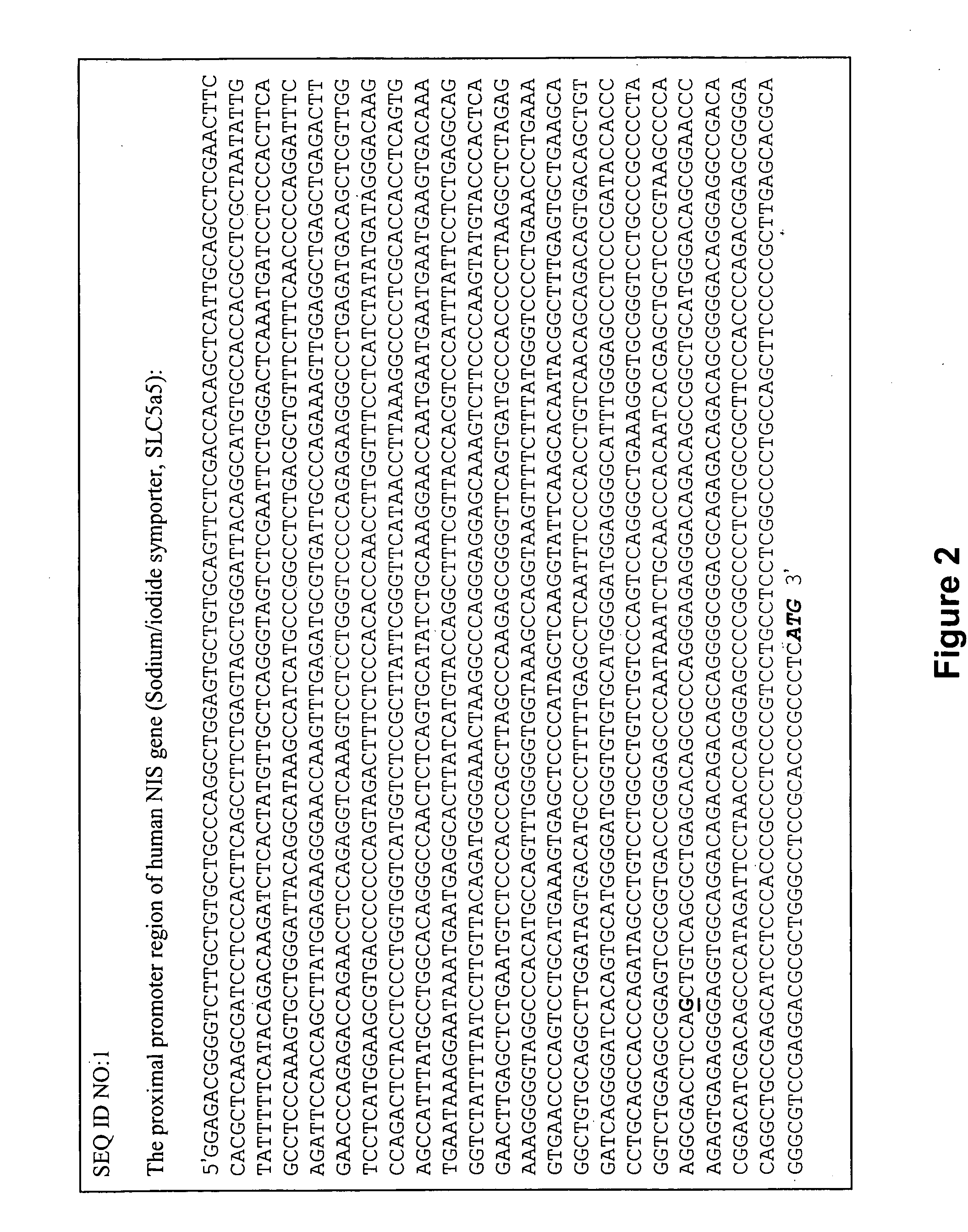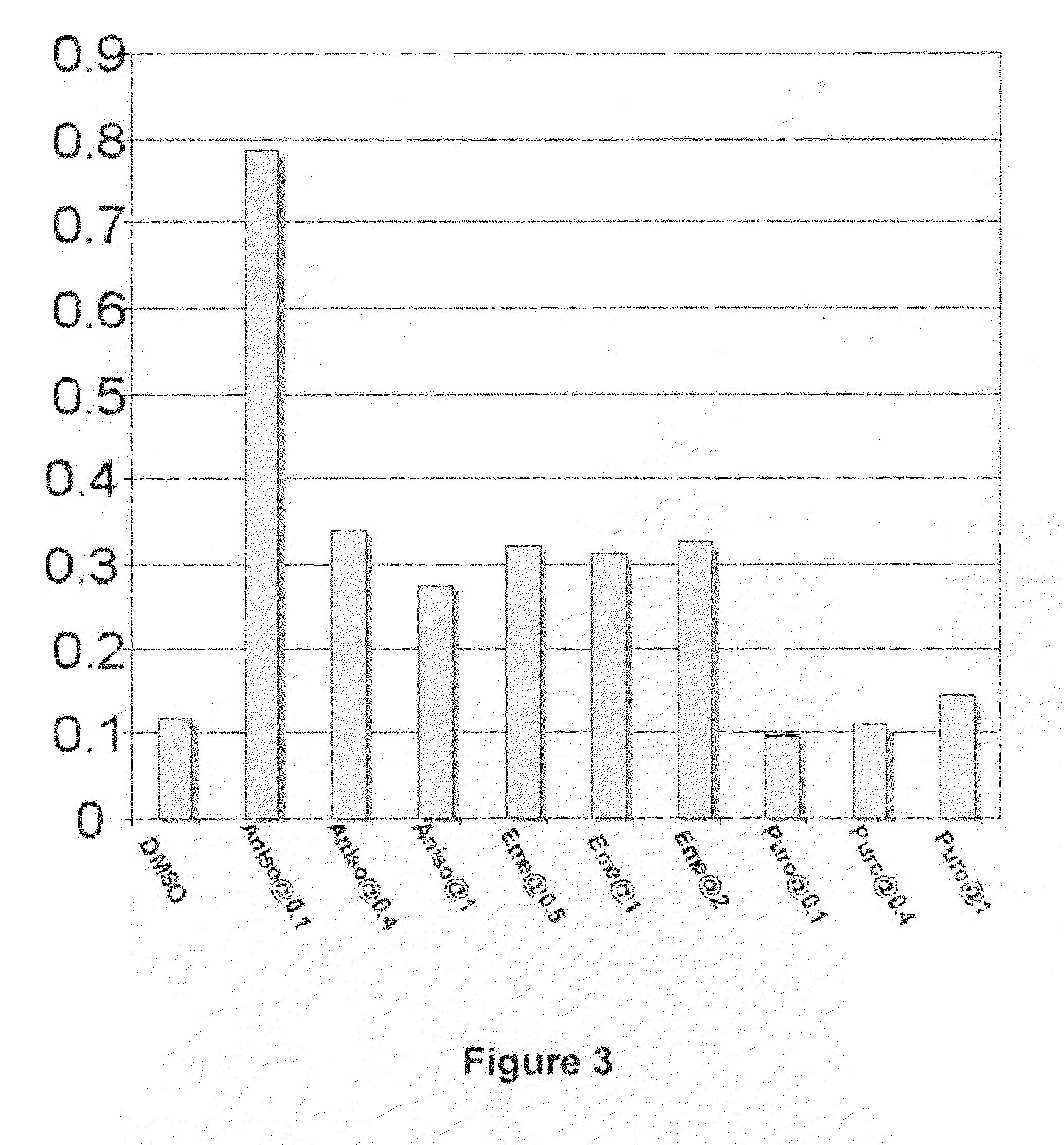Transcriptional repression of sodium-iodide symporter in thyroid carcinoma
a transcriptional repression and sodium iodide technology, applied in the field of thyroid carcinoma, can solve the problems of 10% of patients' deaths, achieve the effects of restoring nis gene expression and radioiodine uptake, restoring radioiodine uptake, and increasing nis expression
- Summary
- Abstract
- Description
- Claims
- Application Information
AI Technical Summary
Problems solved by technology
Method used
Image
Examples
example 1
Effects of Treatment with Anisomycin, Emetine and Puromycin on the Normalized Luciferase Activity in pGL3-Basic Reporter Plasmid and Luc-1 / pGL3-Basic Reporter Construct
[0122]This example shows the effect of protein synthesis inhibitors (Aniosomycin, Emetine, and Puromycin) on the activity of the luciferase reporter gene in the absence or presence of hNIS promoter.
[0123]The pGL3-basic plasmid, together with phRG-B plasmid (as transfection efficiency control) and pUC-18 (as carrier) were transiently transfected into KAK-1 cells cultured under basal conditions supplemented with 0.01% DMSO (as solvent control), Anisomycin (0.1, 0.4, 1 μg / ml), Emetine (0.5, 1, 2 μg / ml) and Puromycin (0.1, 0.4, 1 μg / ml) respectively for 2 days. The cells were then lysed and firefly luciferase activity and Renilla luciferase activity were quantitated using a luminometer (FIG. 3).
[0124]Luc-1 / pGL3-basic reporter construct (Luc-1) was prepared containing the promoter region of the human sodium / iodide symporte...
example 2
The Effects of Deletion of −724 to −534 bp Region from the Luc-1 / pGL3-Basic Reporter Construct
[0126]Here, the effects of the deletion of −725 to −534 bp region from the translation start site of the hNIS promoter (FIG. 1), designated as NIS-Repressor Binding Site (NRBS), on the expression of reporter gene was assessed.
[0127]As shown in FIG. 5, the #1, #4, #6 bar sets represent the results for different clones, in which the DNA fragment from −724 to −534 bp (SEQ ID NO:2) has been deleted from the Luc-1 / pGL3-basic reporter plasmid. The plasmid DNA constructs, together with phRG-B plasmid (as transfection efficiency control) and pUC-18 (as carrier) were transiently transfected in to KAK-1 cells cultured at basal conditions supplemented with 0.01% DMSO (as solvent control) or CHX at 10 μg / ml for 2 days. The cells were lysed, followed by the quantitation of firefly luciferase and Renilla luciferase activities. The data in FIG. 5 show that deletion of the region from −724 to −534 increase...
example 3
NIS-Repressor Binding Site (NRBS) is Refined by Site-Directed Mutagenesis
[0128]This example shows further refinement of the NRBS by site-directed mutations.
[0129]Previous work (Li et al. 2007, JCin Endocrinol Metab 92:1080-10874), utilizing serial deletions of hNIS promoter regions, provided evidence that a region between −774 to −478 bp (NRBS) is a binding site for a trans-active transcriptional repressor, NIS-repressor. In those studies, thyroid cancer cells treated with cycloheximide (CHX) had enhanced transcription of hNIS, both the native gene mRNA product and when studied using an hNIS promoter-luciferase reporter assay. To further refine the NRBS, site-directed mutations are introduced into NRBS. The effects of CHX treatment on 22 mutant hNIS promoter constructs are shown in FIG. 7 with data normalized to the F4.5-pGL3-basic control vector. The result demonstrates that mutation-10 resulted in a remarkable reduction of luciferase activity. In consideration of the activity of f...
PUM
| Property | Measurement | Unit |
|---|---|---|
| residence time | aaaaa | aaaaa |
| time | aaaaa | aaaaa |
| time | aaaaa | aaaaa |
Abstract
Description
Claims
Application Information
 Login to View More
Login to View More - R&D
- Intellectual Property
- Life Sciences
- Materials
- Tech Scout
- Unparalleled Data Quality
- Higher Quality Content
- 60% Fewer Hallucinations
Browse by: Latest US Patents, China's latest patents, Technical Efficacy Thesaurus, Application Domain, Technology Topic, Popular Technical Reports.
© 2025 PatSnap. All rights reserved.Legal|Privacy policy|Modern Slavery Act Transparency Statement|Sitemap|About US| Contact US: help@patsnap.com



